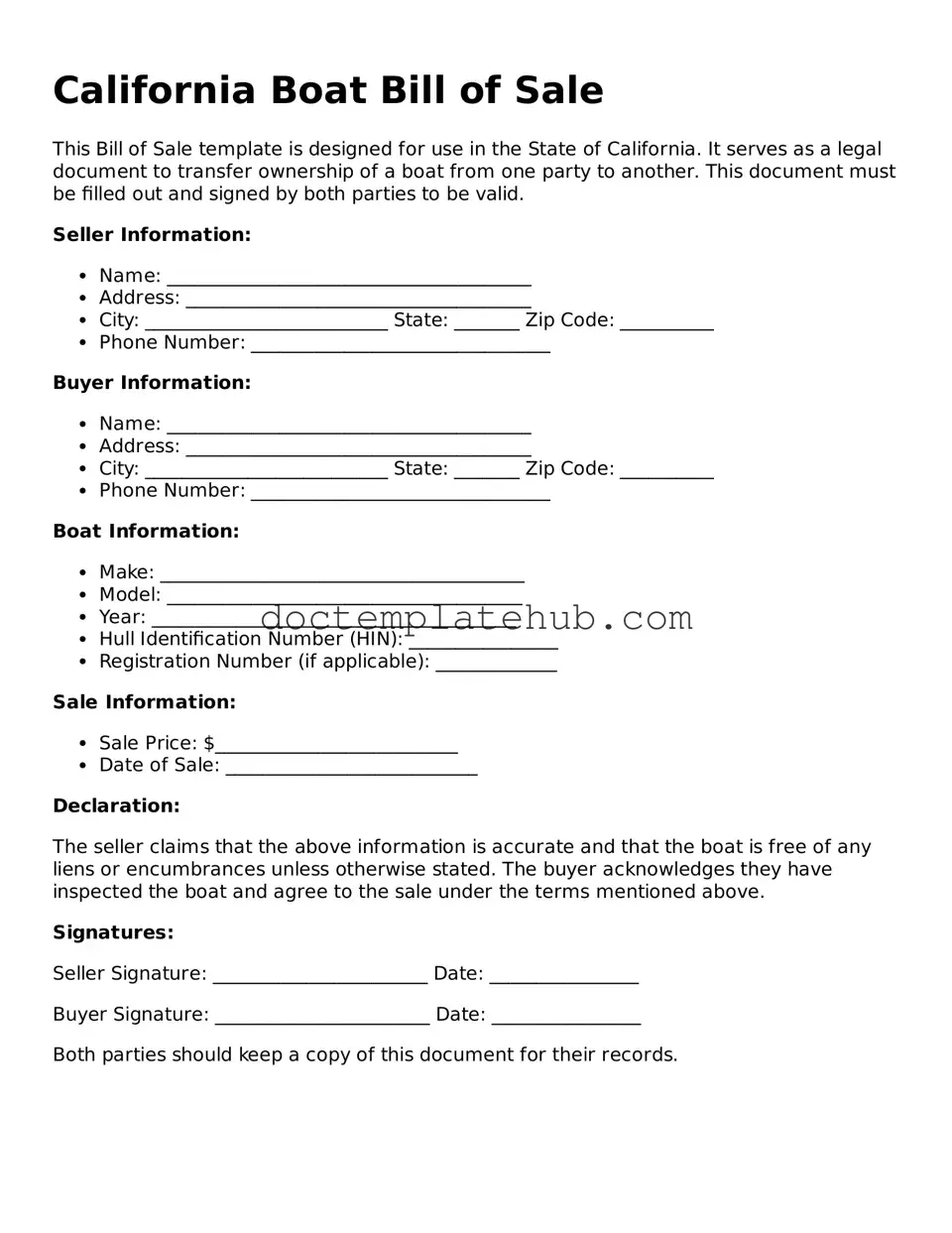What is a California Boat Bill of Sale?
A California Boat Bill of Sale is a legal document that serves as proof of the transfer of ownership of a boat from one party to another. This form includes essential details such as the names and addresses of the buyer and seller, a description of the boat, and the sale price. It helps protect both parties in the transaction by providing a clear record of the sale.
Is a Bill of Sale required in California for boat sales?
While a Bill of Sale is not legally required for all boat sales in California, it is highly recommended. Having a Bill of Sale can simplify the registration process with the California Department of Boating and Waterways and can serve as evidence of ownership in case of disputes. Additionally, certain types of boats, especially those that are motorized, may require a Bill of Sale for registration.
What information should be included in a California Boat Bill of Sale?
The Bill of Sale should include the following information: the full names and addresses of both the buyer and seller, a detailed description of the boat (including the make, model, year, hull identification number, and any accessories included in the sale), the sale price, and the date of the transaction. Both parties should sign the document to validate it.
Can I create my own Boat Bill of Sale?
Yes, you can create your own Boat Bill of Sale. However, it is important to ensure that it includes all necessary information and complies with California laws. Many templates are available online, which can help guide you in drafting a comprehensive document. Alternatively, you can also obtain a form from the California Department of Boating and Waterways.
Do I need to have the Bill of Sale notarized?
In California, notarization of a Boat Bill of Sale is not required. However, having the document notarized can add an extra layer of security and authenticity, especially if there are concerns about potential disputes in the future. It is a good practice to keep a copy of the notarized document for your records.
What happens if the seller still owes money on the boat?
If the seller has an outstanding loan on the boat, it is crucial to address this before completing the sale. The seller should pay off the loan or obtain permission from the lender to sell the boat. The Bill of Sale should clearly state that the boat is being sold free of any liens, or if there is a lien, how it will be resolved during the sale.
How do I register the boat after the sale?
After the sale is completed and you have the signed Bill of Sale, you must register the boat with the California Department of Boating and Waterways. You will need to provide the Bill of Sale, proof of ownership, and any other required documentation. Registration fees will apply, and it is advisable to complete this process promptly to avoid any legal issues.
What if the boat is being sold “as is”?
If the boat is sold “as is,” it means that the buyer accepts the boat in its current condition, including any defects or issues. It is important to clearly state this in the Bill of Sale to avoid any misunderstandings. Buyers should thoroughly inspect the boat before finalizing the sale, as they may not have recourse for repairs or issues discovered after the purchase.
Can a Bill of Sale be used in place of a title?
A Bill of Sale cannot replace a title, but it can serve as a temporary proof of ownership until the title is transferred. In California, a title is required for most boats, and the seller must provide the title to the buyer at the time of sale. The Bill of Sale will complement the title transfer process and help establish a clear ownership record.
